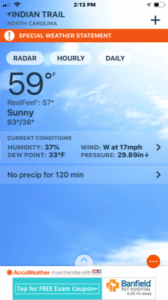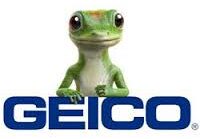Brands we have worked with.
Since 2012, Thumbvista has worked with many companies from Fortune 500 to small start-ups all over the world with geofencing campaigns. When we started in 2012 there was only a handful of geofencing companies, now they seem to be popping up everyday. Many of the new geofencing companies sell the solution well, maybe even provide a strong service, but don’t know the technical side of how it works. When it comes to geofencing questions, we have heard it all. Many times, customers have similar questions to each other and so we have decided to create a list on some of the most frequently asked questions for geofencing companies in the mobile marketing and advertising industry.
Top 25 Geofencing FAQs
- Q: What is geofencing? A: Geofencing or to geofence is to make a virtual perimeter in a real-world environment. The geofence can be made via radius or polygon. Check out this video.
- Q: How does geofencing work? A: By using software and communicating with location- based services to trigger an action such as entering, exiting, or dwell time within the designated geofence. Check out this explanation on how GPS works.
- Q: How does geofencing work in terms of mobile? A: There are multiple ways geofencing can be use in the mobile space. The mobile device can communicate via GPS. A mobile device can communicate with other devices to trigger action when the phone leaves or enters an area. This is commonly used within applications for items ranging from thermostats to tracking devices for logistics.
- Q: How does geofencing work without an app? A: Technically speaking, without an app location service can communicate with a few environments based on your needs. The location can come from a cell tower, Bluetooth or Wifi. Most commonly in terms of advertising, we can use location from someone else’s app to advertise via mobile advertising exchanges. A geofence is made to communicate with a request of where we want ads to appear or capture mobile IDs within the designated geographic area.
- Q: Who does geofencing work for? A: Many industries can benefit from a geofencing campaign if the strategy makes sense. Everything from recruiting employees, branding or creating awareness, to driving sales. Case Studies.
- Q: What size ads are recommended? A: The most common ad sizes are 320 x 50 and 300 x 250 for mobile advertising. We accept many other sizes and sizes are subject to change based on new device and app formats.
- Q: What advertising formats can be used? A: Display, rich media, video and audio. more here from IAB
- Q: Where do ads typically appear? A: That depends on what type of geofencing and advertising you are using. For example, display advertising can show within an apps content or at bottom of the screen (see attached) or if you are using messaging, it could be a push notification via an app.

- Q: What are some apps where the ads will appear? A: Some of the most common app categories for seeing your display ad via geofencing are going to be sports, news, games and weather. Weather apps are very good places to see a geofenced ad because the constant exchange of location data for accurate temperature and forecast of local area.
- Q: What is a click-through-rate? A: Commonly referred to as CTR, a click-through-rate is the amount of impressions it takes to get a click. There are many calculators out there, but the formula is clicks divided by impressions x 100.
- Q: What is a common click-through-rate? A: A common click -through-rate can very base on format and creative size and quality. Thumbvista’s common click-through-rate is .28-.38% Here are some ideas on improving the CTR.
- Q: What type of reporting is common with a mobile advertising campaign using geofencing? A: Reporting can offer custom KPIs such as conversions, but most common metrics are clicks, impressions, CTR (click-through-rate).
- Q: Can geofencing campaigns track conversions? A: Yes, geofencing marketing campaigns can track conversions for on or offline attribution. By user conversion pixels we can report whether a form has been filled out or a mobile device has been seen in close proximity to a physical location such a retail store.
- Q: Can the ads appear at certain times of day? A: Yes, advertising can be day parted to focus in on strong more effective times of day.
- Q; Are the ads pushed at customer/device? A: In some versions of geofencing a push notification is common. This would be app-based and the marketer must have ownership of the app in most cases. Our mobile ad geofencing solution is display advertising within the content of an app and can vary in size or formation.
- Q: How frequently do ads appear? A: Advertising frequency can be controlled to a certain extent. Mainly, advertising frequency is controlled by competition and space availability.
- Q: How much does it cost? A: Price can vary based on your strategy. We go into more details here. Geofence advertising cost explained
- Q: What are some reasons geofencing cost may vary? A: Geofencing cost varies based on supplier, app placements, volume and more. See blog post here on geofencing cost explained.
- Q: Can any place be geofenced? Yes, there are no limitations on creating a geofence. However, there are limitations in some areas based on what type of advertising you run for ethical purposes. For example, the state of Massachusetts passed a bill that limits certain advertising around health care facilities. Here are some top places to geofence.
- Q: Do ads appear in mobile app or web? A: In our case this depends on location quality and size of geofence. Typically, it is 80% app 20% web, but this can vary with high mobile web as the perimeter of a geofence gets larger.
- Q: Can desktop ads be geofenced? A: No, not in the same way as mobile due to the need for accurate location data from the GPS of a device. IP targeting can be a useful tool in targeting a small area for desktop ads. If IP targeting is of interest we can help with that with our self and full advertising services.
- Q: What is the difference between geofencing and geotargeting? A: The difference in geofencing and geotargeting is that geofencing is a mobile tool that makes a virtual perimeter of nearly any size focusing in on lat/long to create an action within the perimeter using location-based services. Geotargeting uses location as well but in a broader sense and can include users with a behavior of visiting an area or have interest in that area. Geotargeted is using zip codes, DMA, city, state or no smaller than a KM.
- Q: Can we retarget based on geofencing a location? A: Yes, there are ways to passively monitor or proactively collect mobile advertising IDs that visit a specific area(s) with the purpose of re-targeting.
- Q: Can we geofence based on phone number? The only device information collected via geofence is a mobile advertising ID or MAID. This is what the mobile advertising industry uses to identify devices for various reasons. This way also offers more privacy for the end user since it does not reveal personally identifiable information.
- Q: How can geofencing work for my company? A: A mobile advertising campaign using the tool of geofencing to target in on a more effective audience can help multiple industries in everything from hiring employees, surveys, to gaining brand awareness and more. Please take a look at some examples of industries and use cases in our case studies section.
If you did not see a question that related to you and your geofencing use case let us know we are happy to add it and answer your question personally. Please note the FAQ list will grow and change as the industry does as well as the clients. Please feel free to reach out with any further questions.








